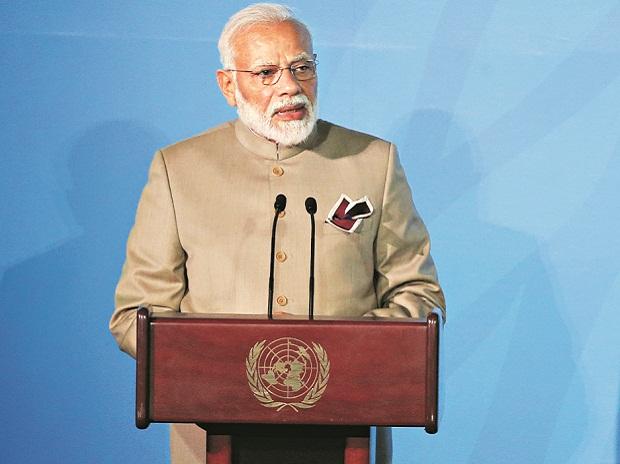By By Manik Mehta
NEW YORK, Sept 27 (NNN-BERNAMA) — The Bloomberg Global Business Forum, which is held during the high-level United Nations General Assembly in the third week of September and has been emerging as an important platform attracting world leaders, opened with a strong pitch for investments by keynote speaker Indian Prime Minister Narendra Modi.
Modi was actually supposed to speak on climate change but he also used the opportunity to speak about the “golden opportunities” awaiting U.S. companies interested in setting up business in India. The Bloomberg group’s chief executive and founder, Michael Bloomberg, moderated a conversation with Modi.
Using metaphors to arouse India’s appeal for the investors, the Indian prime minister said that this was “only the beginning”, adding that “today’s India is in a unique position.
“If you want to invest in a market where there is scale, come to India. The Indian government respects the business world and wealth creation.”
Modi spelt out the “four Ds” that made India an attractive investment destination: democracy, demography, demand and decisiveness.
After the highly-publicised “Howdy Modi” rally in Houston, Texas, which attracted 50,000 guests from the burgeoning Indian diaspora in the U.S., and also US President Donald Trump, the Bloomberg Global Investment Forum was the most important event addressed by Modi who met CEOs representing a wide spectrum of industries.
Together with Bloomberg, Modi said that two new initiatives would be taken to strengthen India’s investment base and make it attractive for international investors: Bloomberg is going to partner with India for inclusion in global benchmark indices and building up a financial services in Gujarat which is Modi’s native state of which he was the chief minister before becoming the Prime Minister.
There has also been some scepticism expressed in U.S. financial circles about the slowdown in India’s economic growth – the economy is expected to grow at just five per cent this year, down from the nine per cent a few years back – but there is also optimism over the future growth potential inherent in the country which, thanks to its huge young population base, continues to attract investor interest.
Modi pointed out in his speech that his government had cut corporate tax which has been, generally, well-received in U.S. business and government circles. Corporate tax has been slashed from 30 percent to 22 percent for domestic companies, but new investments in manufacturing would be even lower, falling from 25 percent to 15 percent.
Modi emphasized in his address that India was taking steps to push the pace of growth, averring that India’s economy would touch the US$5 trillion target.
The new tax structure props up India’s position as an investment destination that can provide competition to other countries, notably Indonesia, Vietnam and other countries in South East Asia vying for a share of the money flowing out of China following the US-China trade war.
The Indian prime minister said that his government had abolished some 50 laws that were outdated and not conducive to growth. And, as earlier, he emphasized that this was “only the beginning”, promising there will be “much more to come in the next days”.
“India is waiting for you. India is the only destination for you,” he declared.
But he also spoke on climate change, attributing to the slow pace in replacing coal for energy purpose to India’s exclusion from the Nuclear Suppliers’ Group (NSG)’.
As India is not a NSG member, it is not getting an assured supply of the fuel to wean away from coal, he said, adding that if India is able to access this, it will create a “new model for the world”.
Although India has been knocking at the NSG door, it has not gained admittance into the club at China’s objection. The NSG has 48 members. Modi was responding to a question by Bloomberg as to when India would reduce the burning of coal.
Coal is used to produce some 72 per cent of the country’s electricity; the Indian power ministry is striving to reduce coal burning to 50 per cent by 2030.
As a contribution to reducing the impact on climate, Modi observed that India intends to achieve 450 gigawatts of renewable power capacity in the “near future” and is ahead of schedule in implementing a more immediate goal of 175 gigawatts capacity from solar, wind and biomass. But India has also said that such targets are contingent upon receiving higher financial support from the industrialised countries.
India, which along with China and the U.S. together contribute to some 50 per cent of the global carbon dioxide emissions.
–NNN-BERNAMA






